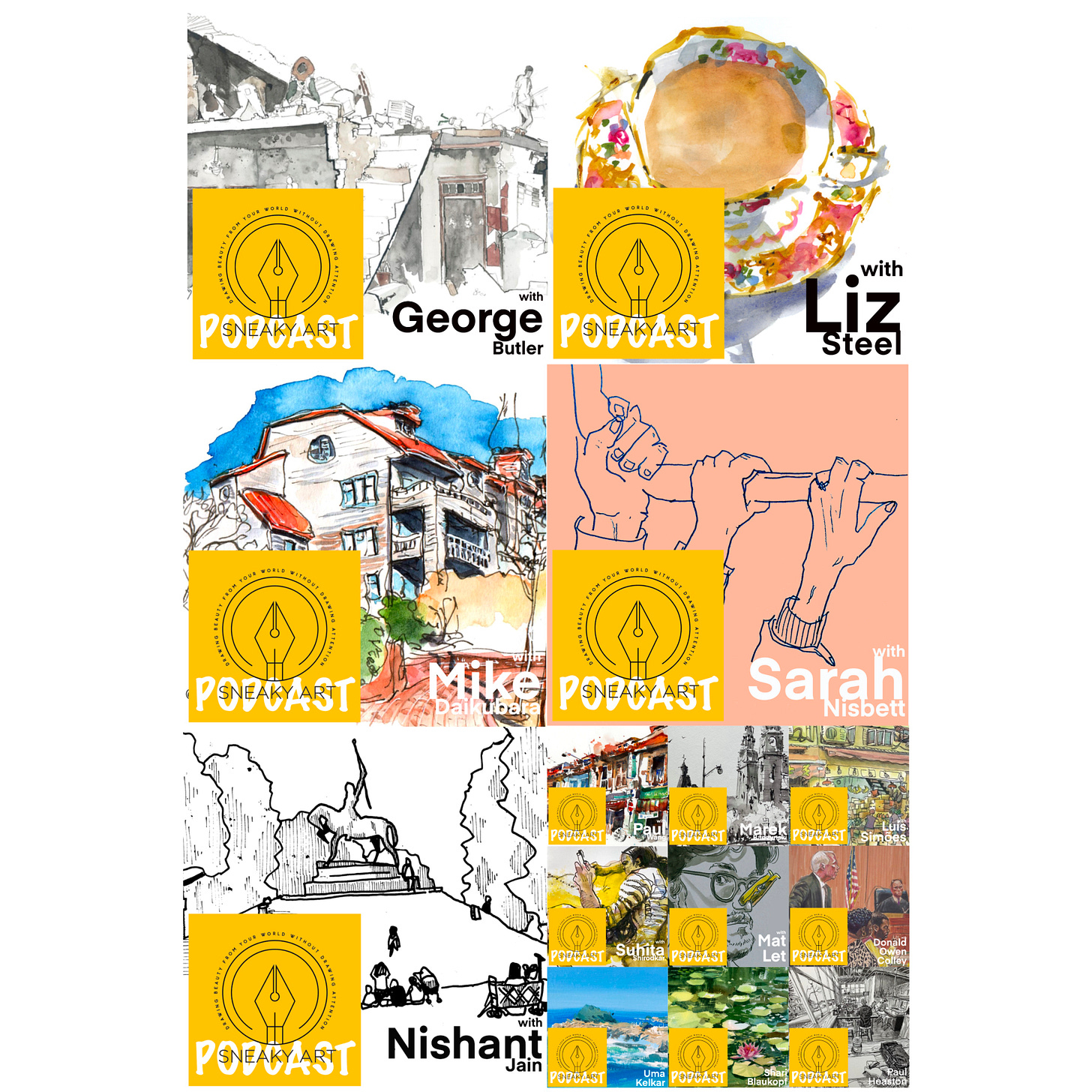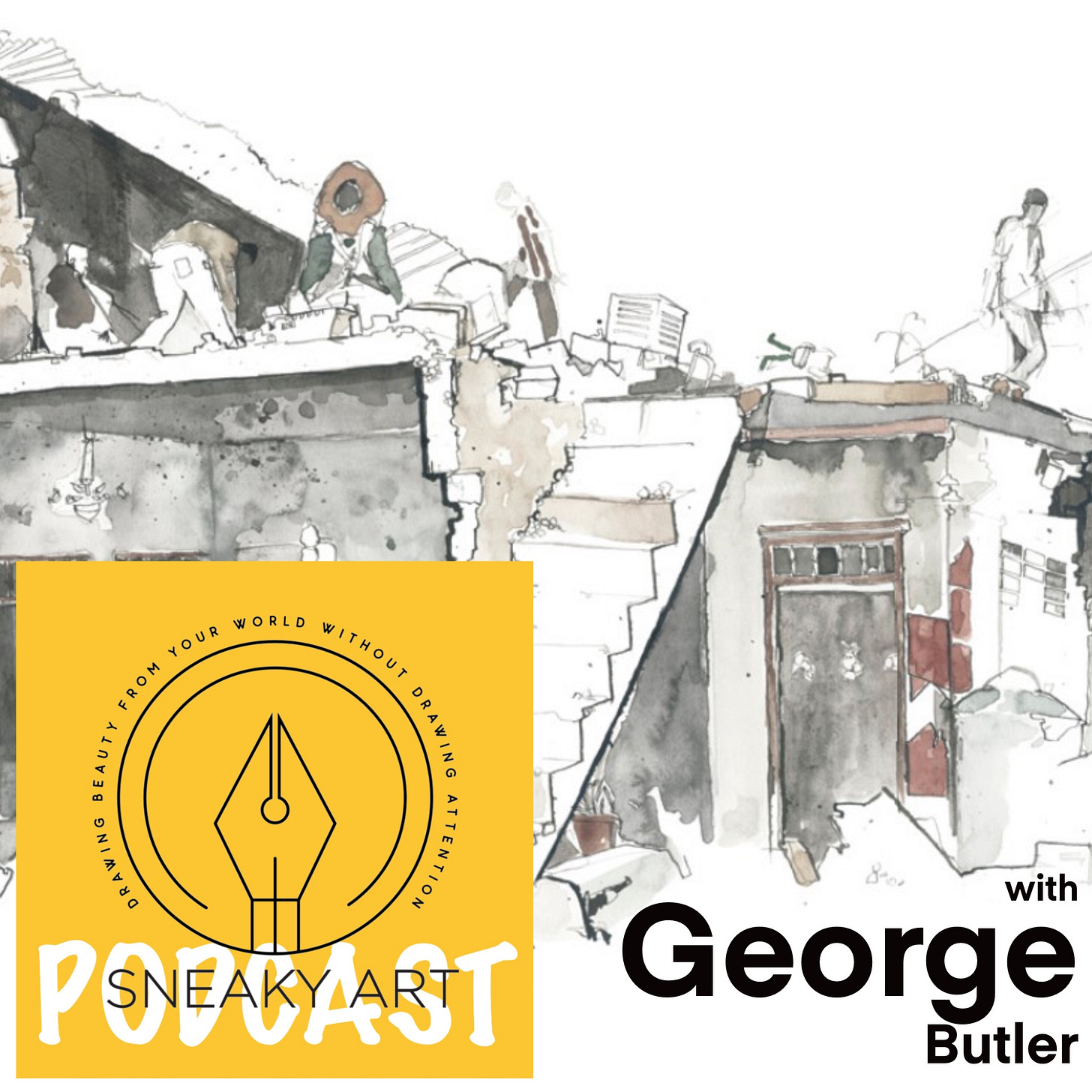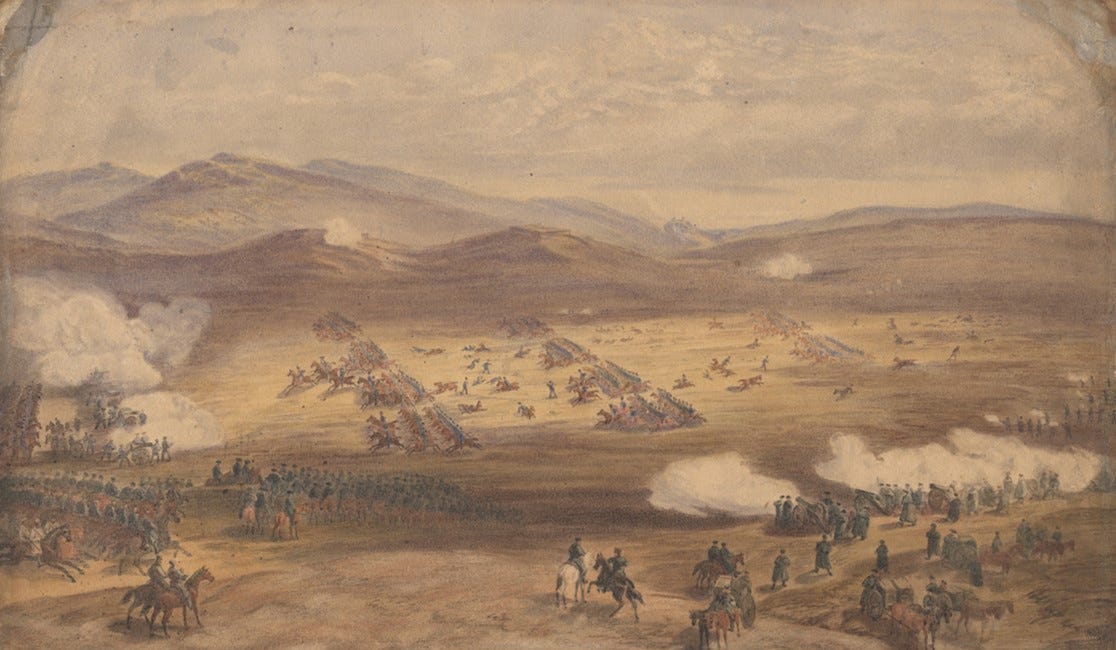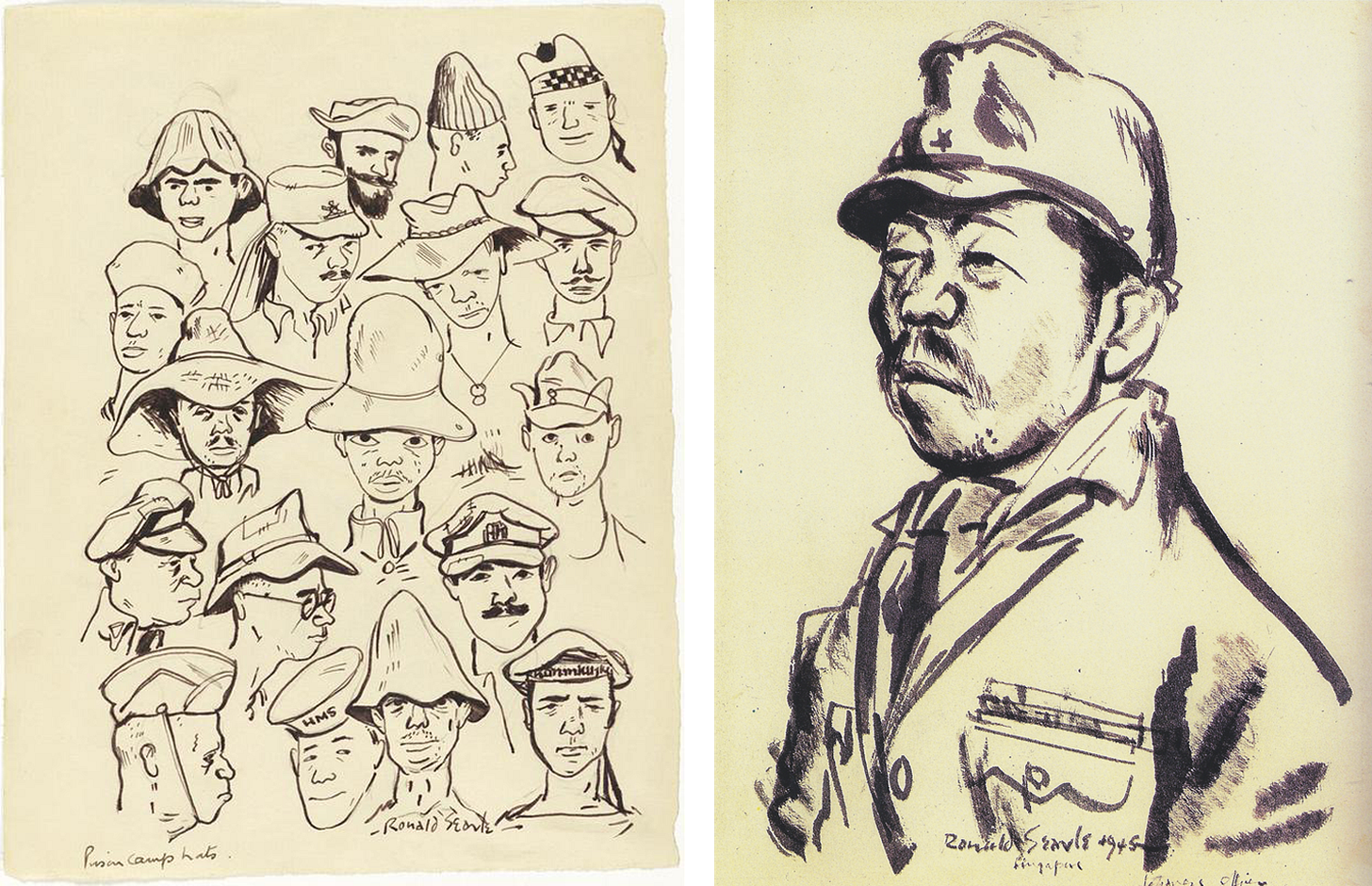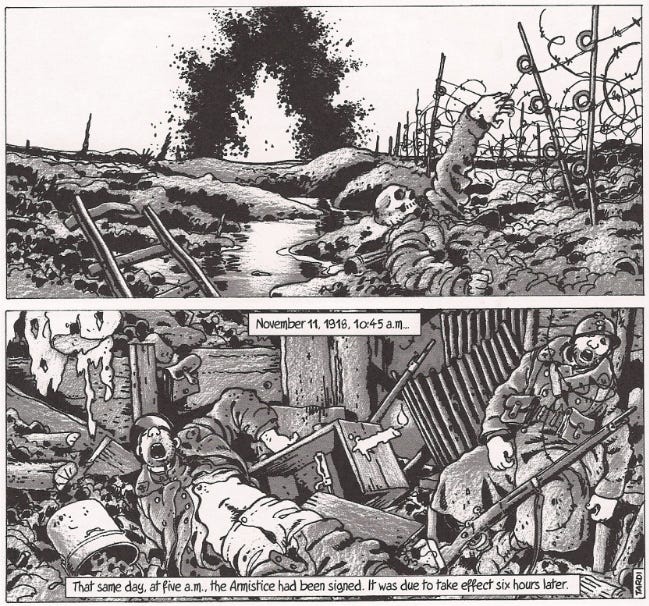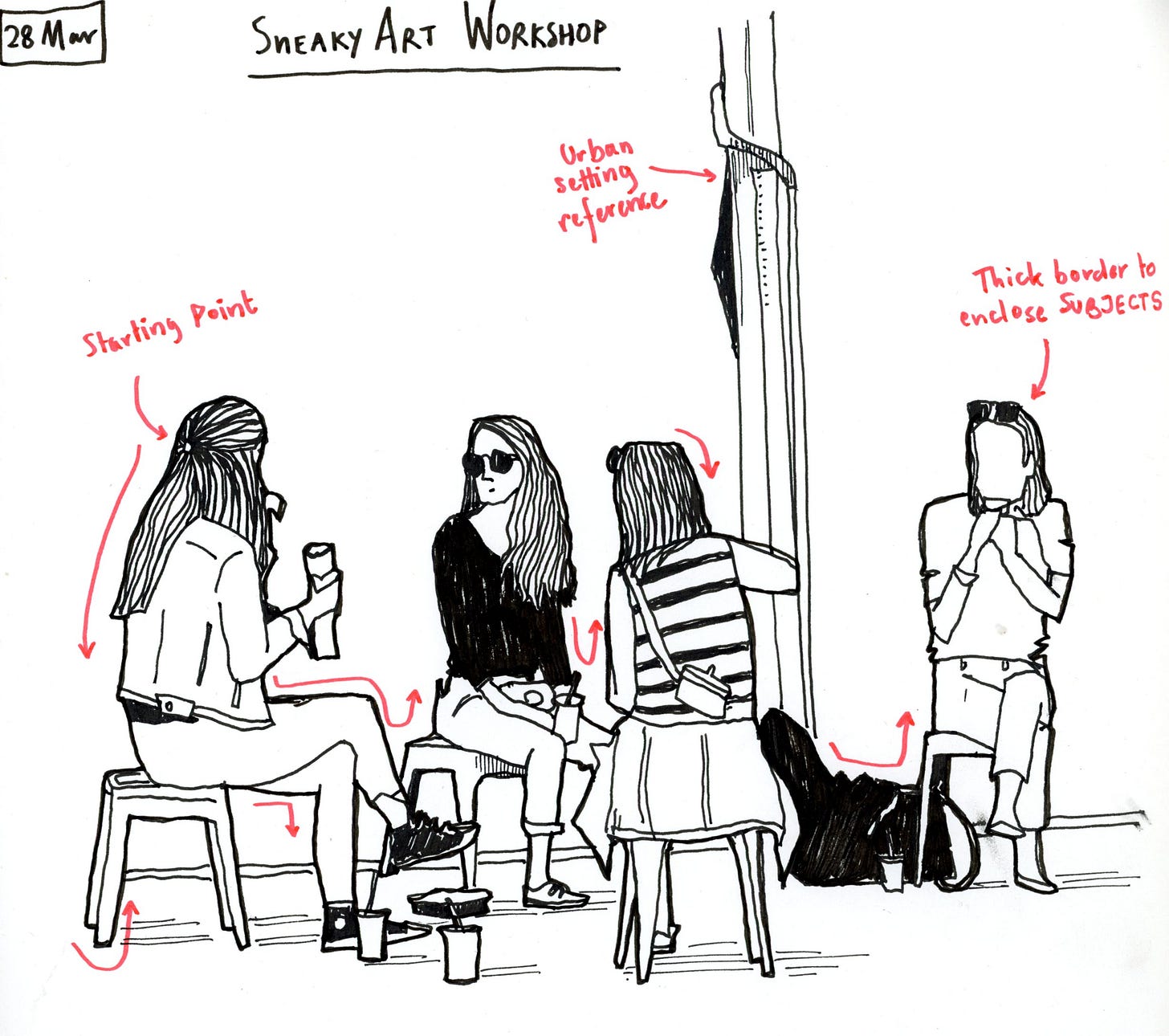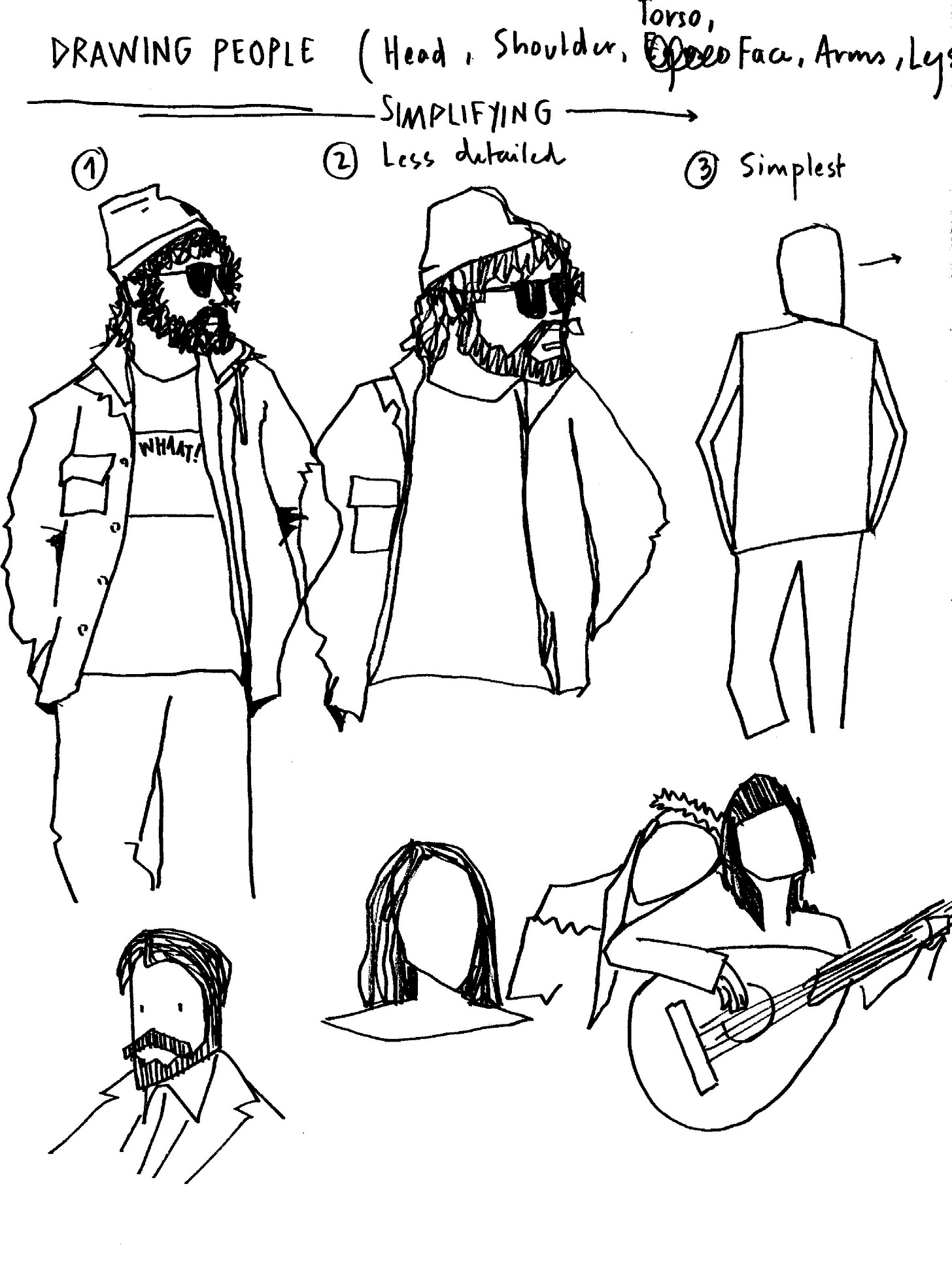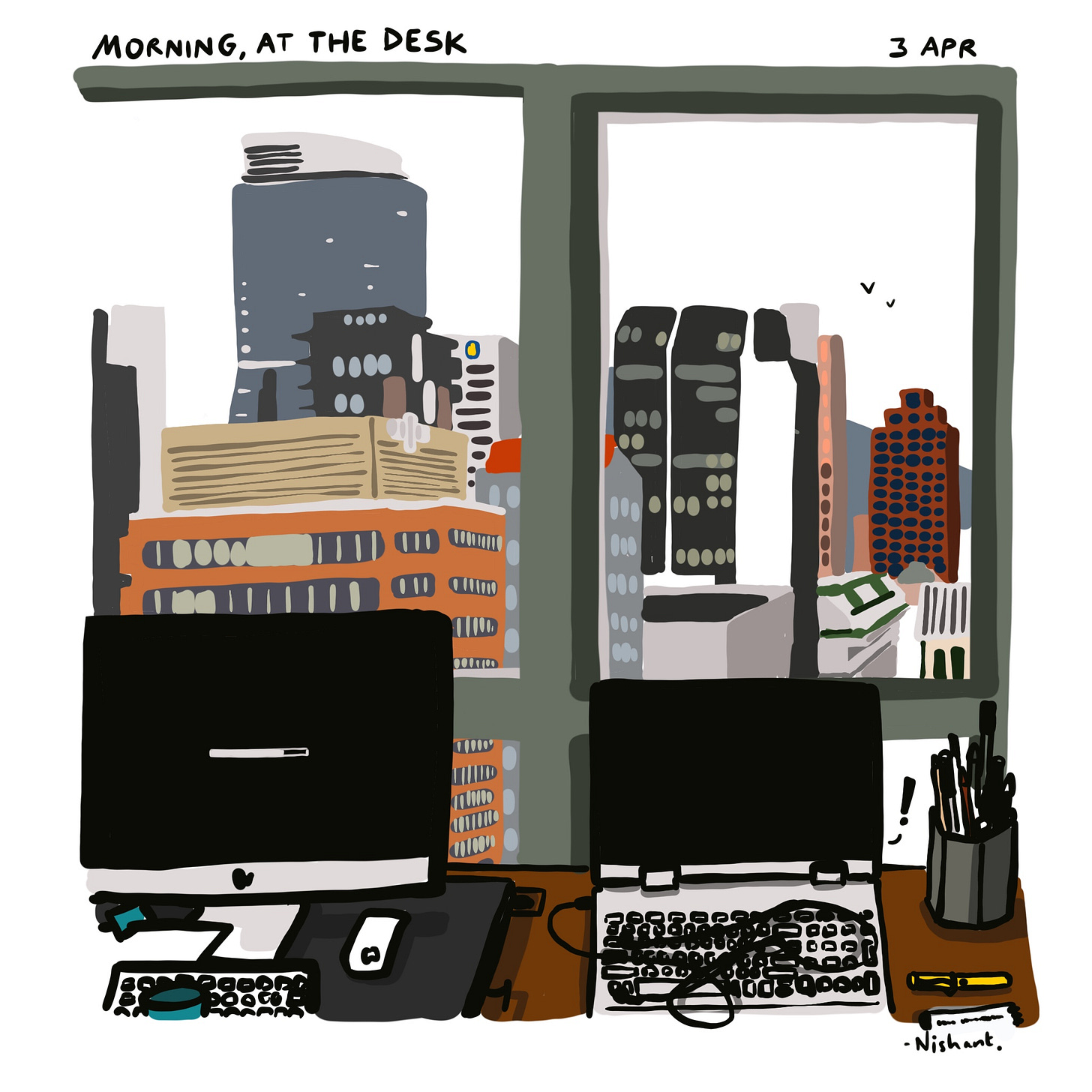#39 - Drawing Across Borders with George Butler
This week, there’s a new episode of the SneakyArt Podcast, many ideas from that conversation, and notice about an upcoming workshop. Sign up information below!
If you like this newsletter, share it with someone who could use it too.
The Why
I ask myself this all the time. I asked it of what I studied in college. I asked it while pursuing a Master’s degree. I asked it again when I left my PhD program halfway, when I decided to become a writer and cartoonist instead.
And when I suddenly started to sell art, or - to put it more accurately - when people suddenly wanted to buy my drawings, I asked this question many more times. Sometimes I would ask them, in a half-serious tone. But mostly I asked myself.
It’s just a drawing. Why do they want to buy it?
One part of this is unhealthy - it is an imposter’s complex. But the other part is very important. I’m glad I do it. I repeat the question as I make more drawings in more sketchbooks. I want to understand how it is working, and be more deliberate with my art. Why did I draw this? Why did I stop to look at that? Is this drawing just for me, or will anyone else care for it? Does that matter? Why? Why not?
I don’t always get straightforward answers. And when I do get an answer, it is rarely complete. I gather bits and pieces of good answers, reflections of one facet of a complex thought I haven’t fully understood, or just a hint of a feeling snatched before it escaped into the ether. I do my best to put together these shards of reality.
Here are some things I ask ‘why’ about, with incomplete answers:
Why is it sneaky? The art is sneaky because the world is changing very quickly. Fleeting moments are fleeting faster than they have ever flet (flot? fletted?) before. Good observations need to be made, if we are going to remember any of this stuff. And the first rule of a good scientific observation is to not to disturb the subject being observed. An observer must not disturb the system they are observing. So I try to stay out of the way.
Why are the subjects so random? To the voice in my head, I say - That’s just, like, your opinion, man. This has been articulated in different ways by the Big Lebowski and by the Buddha. Both of their meanings matter. I don’t have an agenda. And the more I go drawing without an agenda, the more I find everything to be interesting. There is also some amount of faith here. In tying these desperate impressions together, I hope to learn more about myself. We are beings of perception, and we perceive the world in our own image.
Why draw things in the city? I am fascinated by the urban landscape. It is an artificial construct, meant to fulfil just one purpose - to make it easier for humans to do things. Streets and buses and trains make it easier to go from place to place. Cafes make it easier to get work done. Buildings make it easier to be warm, get sleep, and keep our valuable things. Traffic lights keep people from running into each other. You get the idea. I like to look at life in all the different ways it operates inside these conditions. I watch it react to other life and to inanimate objects put there for its pleasure.
Why not show people their drawings? It’s more fun this way.
When I look at the art of other urban sketchers, I ask myself the question again - why. Sometimes an answer appears just from looking at their work, sometimes I ask them and they are able to tell me. Some of those people have featured on the Podcast already.
The Why of the Podcast
One reason for starting the podcast was that I had all these questions to ask different sketchers, and the pandemic had made it impossible. Being around other artists, watching them do their thing, is my favorite way to learn. The podcast helps me to continue this path of self-education (with a little help from my sketching friends), and I am delighted to be able to share that with everyone who listens.
Speaking to people in the urban-sketching community, who come from different lines of work with different lessons and experiences, I get good answers. In the latest episode, I also got some great answers.
Ep 15 - Drawing Across Borders with George Butler
In this episode of the SneakyArt Podcast, I spoke with British artist George Butler, who makes ink/watercolor drawings of people in conflict-zones and refugee camps all over the world. His latest book (Drawn Across Borders) tells the migration stories of 12 individuals, compiled from travels over the past decade. Modern reasons for migration - legal or otherwise - include political upheaval, civil strife, proxy wars, and, increasingly, climate change. But human migration, he argues, is a basic feature of human existence, and has been so for hundreds of thousands of years.
In this respect, George and I talk about the importance of sharing individual stories. I ask him about drawing scenes that are not conventionally pretty, and whether it is possible to find art in such environments. This leads to a deeper discussion about the power of illustration - what the artist puts into it and what the viewer derives from it - and thus the broader purpose of what we call art.
I am immensely proud to bring this episode and conversation to you. We discuss many practical aspects of making art in places where one is uncomfortable and potentially unsafe. We talk about moments when he felt like an intruder, and when he suffered a crisis of faith in a children’s hospital in Syria. It was a reaffirming conversation. I came away with a renewed sense for why I make my art, and a better understanding of the directions I want to go.
If you enjoyed this episode, consider leaving me a review on Apple Podcasts, or whichever streaming service you use.
Spotify | Apple | PocketCasts | Google | Web | Gaana | JioSaavn
Bonus Commentary on War Illustration
This month, I am offering extra commentaries on some of the more interesting tangents from my conversations with George Butler and Liz Steel (in Ep 14). For the latest one, I wrote about the origins of war imagery, illustration and reportage. I include links to the profile of an artist who inspired George’s work - Ronald Searle, who made hundreds of secret drawings while imprisoned in a Japanese WW2 POW camp.
I share also the work of a graphic novelist who first tuned me into the ravages of war. The book was “It Was the War of the Trenches” by Jacques Tardi, and it tells the stories of ordinary people who signed up for the war to end all wars (WW1).
This document is free to download for all listeners who support my work. Click below to get it.
Become a Member
By joining as a member on my BuyMeACoffee page, you support my work on a monthly basis. In exchange, I offer different ways to communicate with me, advance notification of upcoming episodes, and exclusive member giveaways (like discounts on all workshops, free portrait offers etc). Read more on my BuyMeACoffee page.
I am deeply thankful to all the fans and supporters who endorse my work in this way. Your support allows me to continue my work as an independent artist, writer and podcaster. :)
More Workshop dates!
After the wonderful enthusiasm for my first batch of workshops, I have decided to extend the offer with another set of dates. In my Zoom-based urban-sketch workshop, I teach the basics of drawing from observation, navigating common drawing obstacles, and finding joy and fulfilment in the therapeutic practice of regular sketching. This workshop will be conducted over two sessions on May 16 and 23.
Below are some demos I did during the last workshop. The first is the opening demo from the first session, talking about how I observe a busy urban scene and focus on the things that matter (to me). As I drew, I explained my strategy to move across the page. This is especially important when you work with ink and at speed, because there’s no way to rectify errors or go backwards.
I do multiple demos to explain different nuances, and the participants do various interesting exercises right after that. Below, I explained how to simplify the human form, some fun ways to begin a portrait, and the essential task of seeing well in order to draw well.
Click the link for more details and a chance to sign up!
Out of the Window
One morning this week, I woke up and sat at my desk with a cup of coffee. The city, like me, was coming to life too. Birds flew in the morning air. I looked at them with envy.
How lucky they are to be free, I thought. How wonderful it must be to just fly wherever you want, any time of day…
And then I was reminded of a quote by Nick Offerman - “If humans had wings and could fly, we would call it exercise and never do it.”
I suppose that is true as well. The sounds of my laptop brought me back to this world, and I forgot about flying for a while.
Facebook Group
I just started a Facebook group to connect with listeners of the show and newsletter-subscribers. On the group, I will run polls, and solicit comments and suggestions for the podcast. If that’s a thing you’re interested in, join the group!
That’s all from me this week. Thanks for your time and attention. Do listen to the podcast, and share your thoughts on our conversation.


